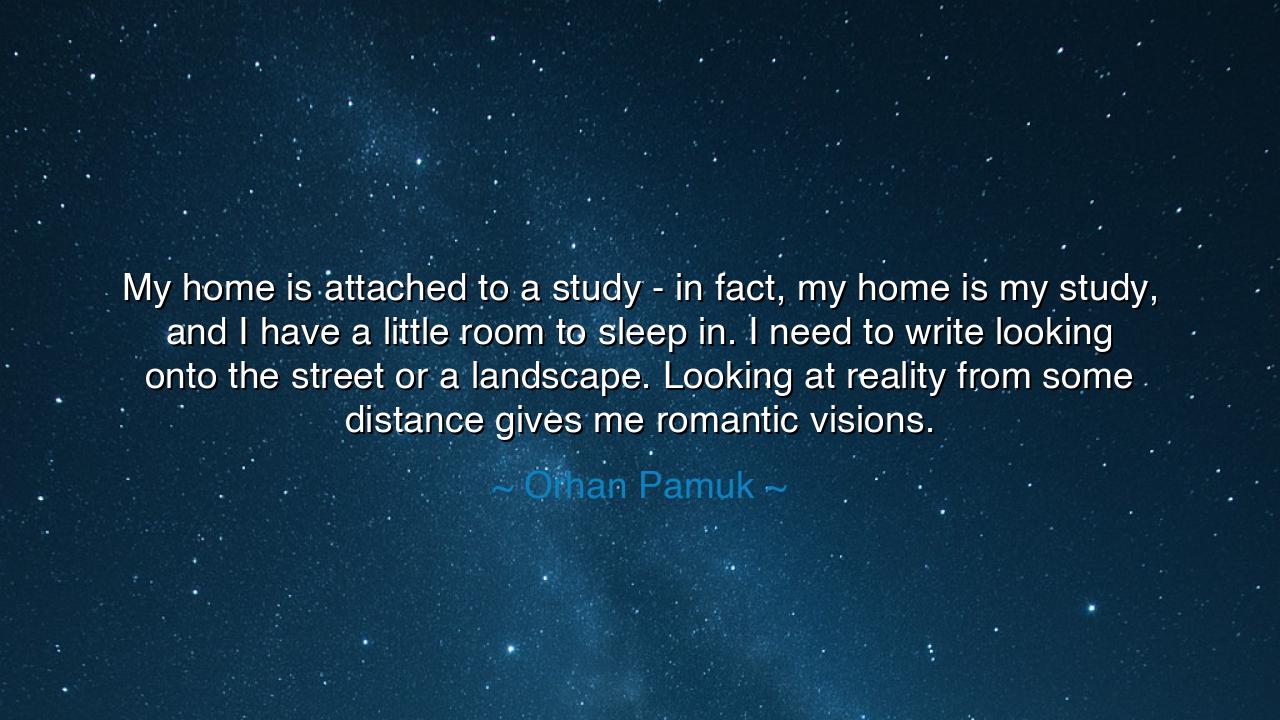
My home is attached to a study - in fact, my home is my study
My home is attached to a study - in fact, my home is my study, and I have a little room to sleep in. I need to write looking onto the street or a landscape. Looking at reality from some distance gives me romantic visions.






Orhan Pamuk, the Nobel laureate whose pen carves both memory and imagination, once confessed: “My home is attached to a study—in fact, my home is my study, and I have a little room to sleep in. I need to write looking onto the street or a landscape. Looking at reality from some distance gives me romantic visions.” In these words lies the secret of the writer’s craft: that art is born not in the noise of life itself, but in the stillness of contemplation, when the artist gazes upon reality from afar, and transforms it into vision.
The ancients knew this truth well. The philosopher Thales, though mocked for gazing at the heavens and stumbling into a ditch, was in fact seeking to understand the infinite by creating distance from the everyday. Likewise, the poet would climb a hill to look down upon the city, not to remove himself from the people, but to see them more clearly, to find in their bustle the patterns invisible from within. Pamuk follows this same tradition: by setting his study against the world, by peering onto streets and landscapes, he allows his imagination to turn common life into romantic visions.
For what is a romantic vision but reality clothed in the garments of wonder? When a passerby walks below his window, Pamuk does not see only a figure in the street. From his vantage point, with pen in hand, he can imagine their sorrows, their secret loves, their struggles, and their dreams. The distance gives him the freedom to create—he is not blinded by the raw nearness of daily life, but inspired by its outlines, by the mystery that lies just beyond his reach.
History offers many echoes of this truth. Think of Emily Dickinson, who, though she rarely left her room, looked out upon her garden and her narrow street and from them conjured poems that touched eternity. Her distance from the world gave her clarity, her solitude gave her depth. Like Pamuk, she understood that the artist need not be lost in the clamor of the crowd to know its essence. By standing apart, she could listen more deeply to the universal rhythms of life.
Pamuk’s devotion to his study also reveals the discipline of creation. To him, the home is not a place of distraction, but a sanctuary for thought, with only a small room for sleep, for life itself is to be devoted to writing. This is the life of the seeker: to sacrifice comfort for vision, to make of one’s dwelling a temple for art. In this, he joins the long line of sages and scribes who lived simply, but whose words became treasures for generations.
The lesson in these words is for all who wish to create: make space in your life for vision. Do not drown in immediacy; step back and look upon reality from a distance, whether it be the quiet of a room, the silence of nature, or the pause of reflection. It is in such spaces that imagination flowers, turning the ordinary into the extraordinary, and granting us glimpses of the romantic truths hidden in daily life.
So I say unto you, seekers of beauty: build your own study, whether it is a desk by a window, a bench beneath a tree, or a place within your heart. Look upon the world with patience, and let distance become your teacher. For in that space between life and vision lies the gift of creation: the ability to see not only what is, but what it means. And like Pamuk, you too may find in the streets and landscapes before you the romantic visions that can shape the soul of generations to come.






AAdministratorAdministrator
Welcome, honored guests. Please leave a comment, we will respond soon